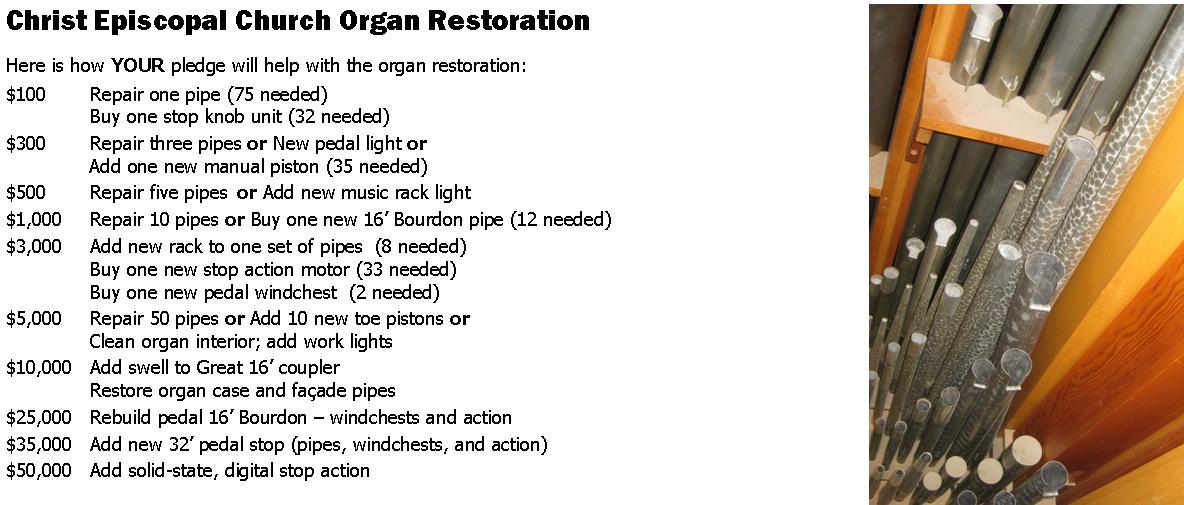
8:00 am - Holy Eucharist, Rite I
9:30 am - Christian Education (Sept to June 2nd)
10:30 am - Holy Eucharist, Rite II
You are here
The Organ

THE REPAIR OF COLLAPSING AND BENDING PIPES, cleaning the pipes and the organ, racking the pipes, and the installation of lights and wiring will require the removal of all 1,634 pipes from the organ. The repaired and cleaned pipes will be returned to the church and reinstalled, along with the new racks. The remaining pipes will then be re-installed. As the pipes are put back into the organ, the instrument will be re-voiced (voicing addresses the sound, speech, and volume pipes make and how they blend with all the other pipes), regulated, and thoroughly tuned. The organ will be thoroughly cleaned, inside and out, and permanent lights will be installed so that the organ can be tuned in the future without using temporary lighting. To update and improve the combination action, the old electrical system will be entirely removed and replaced with a silent, digital combination action, making stop changes lightning fast, quiet, and reliable. The construction of new bass pipes will increase the fundamental tone of the organ and will provide significant warmth to the bass. A further improvement to the pedal division of the organ will be the addition of a stop that will further broaden and “warm” the sound of the organ. The addition of a Swell to Great 16’ coupler will increase the warmth of sound and also provide additional tonal possibilities.

Click here for an Organ Renovation Pledge Card.
About the Organ
During the 1980 renovations, a solid cherry-cased tracker organ, designed by Christopher Linde (who is currently with the Johannes Klais Orgelbau of Bonn, Germany) was installed. The organ was built and initially assembled in the Moeller Organ Factory in Hagerstown, MD, before being installed and regulated in the newly renovated and enlarged balcony and choir loft at Christ Church. Mr. Linde was assisted in design and installation by Mr. Richard Howell, from England.The two-manual mechanical action organ consists of 25 stops and 35 ranks. It is characterized by its well-regulated and easy-to-play action. It is mechanically excellent and extremely reliable. Its tonal concept avoids extremes. The instrument was designed to support, inspire and embellish the performance of the liturgy of the Episcopal Church, as well as to serve as a recital and instructional instrument to the community. The facade of the main case houses the Great division of the organ which is totally exposed. Behind it is the swell division, which is enclosed. The pedal pipes stand in separate cases on the left and right of the main case.
